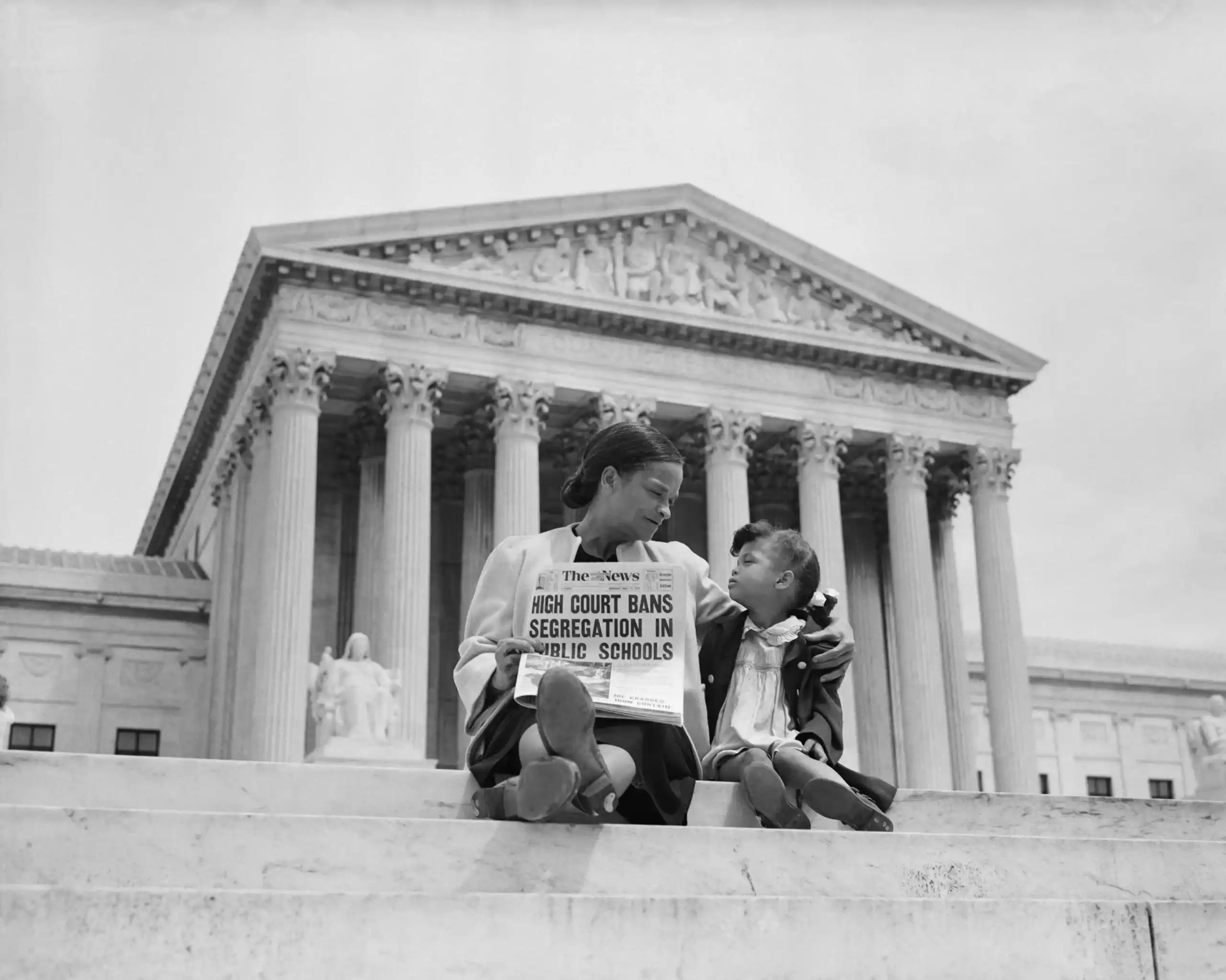What Is Brown vs. Board of Education?
Mia Wilson

Photo: What Is Brown vs. Board of Education?
What Is Brown vs. Board of Education?
Brown v. Board of Education is one of the most significant legal cases in United States history. Decided in 1954 by the U.S. Supreme Court, this landmark ruling declared the racial segregation of children in public schools unconstitutional. The case played a pivotal role in dismantling racial barriers in the American education system and laid the groundwork for the broader civil rights movement of the 1950s and 1960s.
Background of Brown v. Board of Education
To fully understand the importance of Brown v. Board of Education, it's crucial to look at the context in which the case arose. In the late 19th century, the Supreme Court's decision in Plessy v. Ferguson (1896) established the doctrine of "separate but equal." This ruling upheld state laws requiring racial segregation in public facilities as long as the segregated facilities were purportedly equal in quality. However, in practice, the facilities and resources provided to African Americans were far inferior to those available to white citizens.
By the mid-20th century, dissatisfaction with this system grew, particularly in the realm of education. Segregated schools for Black children were often poorly funded, inadequately staffed, and lacking in essential resources. African American parents, civil rights organizations, and legal advocates began to challenge the constitutionality of these inequalities.
The Legal Battle Leading to Brown v. Board
The case began in Topeka, Kansas, when Oliver Brown, a Black parent, attempted to enroll his daughter, Linda Brown, in a nearby white elementary school. When the school denied admission based on race, Brown, with the support of the NAACP (National Association for the Advancement of Colored People), filed a lawsuit against the Topeka Board of Education. This case was combined with several other similar cases from different states and brought before the Supreme Court under the collective title Brown v. Board of Education of Topeka.
Led by attorney Thurgood Marshall, who would later become the first African American Supreme Court Justice, the NAACP argued that segregated schools violated the Equal Protection Clause of the 14th Amendment. They presented evidence demonstrating the psychological and emotional harm caused to Black children by segregation, including research by social scientists such as Dr. Kenneth Clark, whose "doll test" studies showed that segregation negatively affected Black children’s self-esteem.
The Supreme Court’s Decision
On May 17, 1954, the Supreme Court, under Chief Justice Earl Warren, issued a unanimous 9-0 decision in favor of Brown. The Court ruled that racial segregation in public schools was inherently unequal and therefore unconstitutional under the Equal Protection Clause of the 14th Amendment.
In the Court’s opinion, Chief Justice Warren wrote, “Separate educational facilities are inherently unequal.” This simple yet powerful statement overturned the precedent set by Plessy v. Ferguson and effectively ended legal segregation in public schools.
The Aftermath and Impact of Brown v. Board
Immediate Effects
Although Brown v. Board of Education was a monumental legal victory, its immediate effects were limited. Many Southern states resisted implementing desegregation, using a variety of tactics to delay or obstruct integration. This resistance led to a series of subsequent court cases and federal interventions to enforce the ruling.
In 1955, the Supreme Court issued a follow-up ruling known as Brown II, which ordered school districts to desegregate "with all deliberate speed." However, the ambiguous wording of this directive allowed for continued delays in many regions.
Broader Civil Rights Implications
Despite the slow pace of change, Brown v. Board of Education had a profound impact on the civil rights movement. It energized activists and organizations fighting for racial equality, leading to pivotal events such as the Montgomery Bus Boycott (1955–1956), the Little Rock Nine school integration crisis (1957), and the March on Washington (1963).
Furthermore, the case set a legal precedent that was used to challenge segregation and discrimination in other areas of American life, including housing, transportation, and employment.
Analysis of Brown v. Board of Education’s Legacy
Brown v. Board of Education is widely regarded as a turning point in American history, but its legacy is complex. While it succeeded in striking down legal segregation, it did not eliminate racial inequality in education. Today, many schools remain racially and economically segregated due to residential patterns, disparities in school funding, and other systemic factors.
Ongoing Challenges
In the decades following Brown, efforts to achieve true educational equality have faced numerous obstacles. Court-ordered busing, designed to promote integration by transporting students to schools outside their neighborhoods, met with fierce opposition in many communities. Additionally, white flight to suburban areas contributed to the re-segregation of urban schools.
According to a 2019 report by the Civil Rights Project at UCLA, schools in the United States have become increasingly segregated by race and income since the 1980s. This trend underscores the ongoing struggle to fulfill the promise of Brown v. Board of Education.
Modern Perspectives on Educational Equity
Many education reform advocates argue that addressing the legacy of segregation requires more than desegregation orders. Policies aimed at equitable school funding, access to quality teachers, and investment in under-resourced communities are essential to closing the achievement gap. Moreover, fostering inclusive curricula and promoting cultural competence in schools can help create a more equitable learning environment for all students.
Conclusion
Brown v. Board of Education remains a cornerstone of American legal and social history. By declaring segregation in public schools unconstitutional, it not only transformed the education system but also galvanized the broader fight for civil rights and equality. While significant progress has been made, the ideals set forth by the Brown decision equal opportunity and fairness in education continue to inspire and challenge society today.
Achieving true educational equity requires ongoing commitment and action. Policymakers, educators, and communities must work together to address the persistent disparities in education and ensure that every child, regardless of race or background, has access to high-quality schooling. Only by doing so can we truly honor the legacy of Brown v. Board of Education and move closer to a more just and inclusive society.
For You
View AllAvoid these 7 common solo travel mistakes to ensure your trip is smooth, safe, and filled with unforgettable experiences.
Mia Wilson
Explore early childhood education, its benefits, and how it shapes a child’s future. Start building strong foundations!
Mia Wilson
Explore the best destinations for solo travelers. Discover safe, exciting, and welcoming places for your next adventure!
Mia Wilson
Discover how to travel the world on a tight budget. Get expert tips for saving money while enjoying unforgettable experiences!
Mia Wilson
Save time with these customizable travel itinerary templates. Download, edit, and plan your perfect trip with ease!
Mia Wilson
Solo doesn’t mean lonely! Learn the best ways to meet people and build connections during your solo adventures.
Mia Wilson
Education
View All
May 20, 2025
What Is Philosophy of Education?
Dive into the philosophy of education, its principles, and how it shapes teaching and learning. Explore its impact today!

April 17, 2025
What Is Secondary Education? Explained!
Learn about secondary education, its structure, and its role in shaping academic and career paths. Get insights today!

May 29, 2025
How Technology Has Changed Education
Discover how technology is revolutionizing education, enhancing accessibility, and transforming classrooms. Learn more now!





